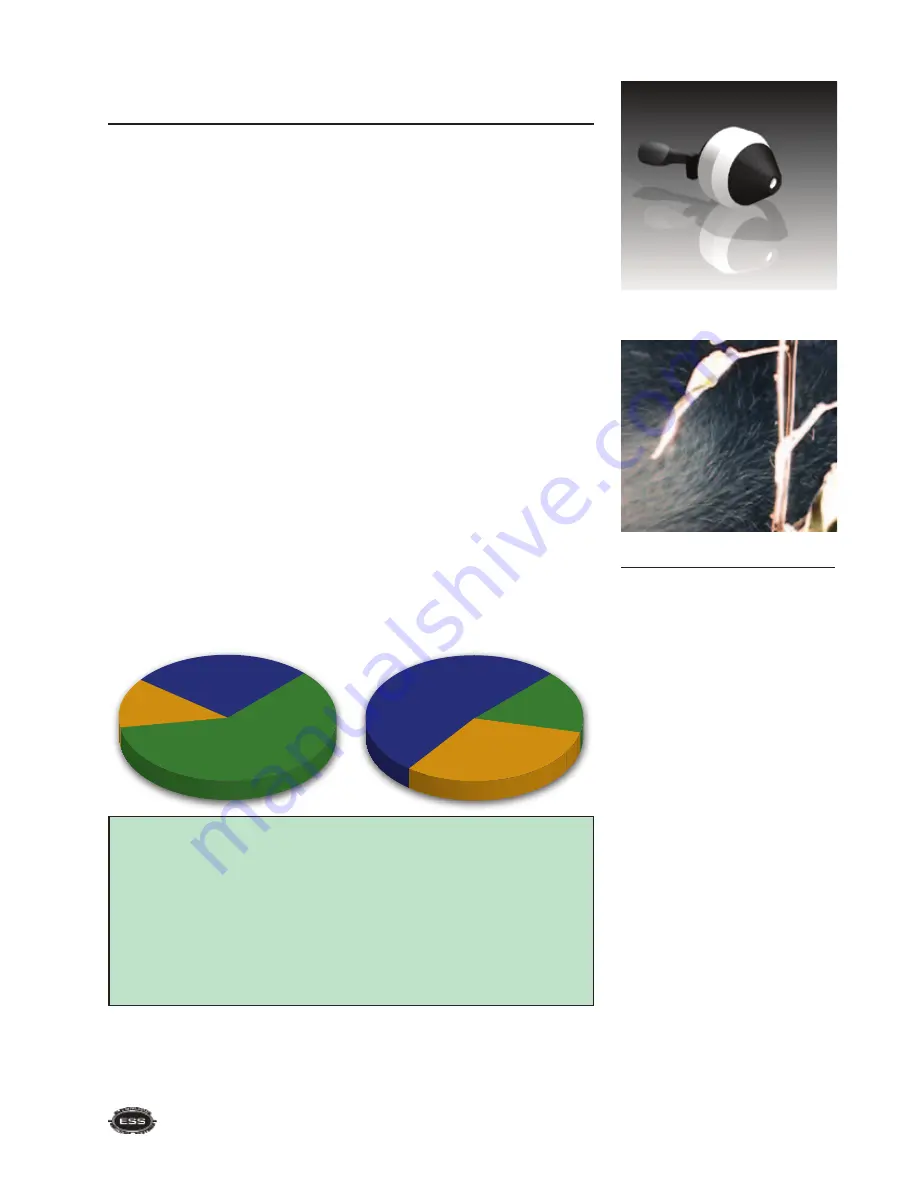
1
ess MaxCharge™ spraygun Owner’s Manual
Overview of the ESS Spraygun
Air-assisted Electrostatic Sprayer
air-assisted electrostatic sprayers produce electrically charged spray
drops that are carried to the plant canopy in a low pressure, gentle, air
stream. The heart of the spraygun is the patented MaxCharge™ nozzle.
air and liquid enter separately at the rear of the nozzle. Just before
leaving the nozzle, the air hits the liquid stream to make many thou-
sands of tiny spray droplets that pass through the charging ring. an
electrical charge is applied to the spray droplets by the charging ring.
Then the charged spray droplets are blown out of the nozzle and
move into the plant canopy where they are attracted to plant material
by electrostatic forces. The electrostatic charge induced by the Max-
Charge™ nozzle is strong enough to allow the droplets to move in any
direction to cover all plant surfaces, even defying gravity to coat the
underside of leaves and the back side of fruits and vegetables. The re-
sult is uniform spray coverage on hidden areas deep inside of the plant
canopy where other sprayers miss.
The MaxCharge™ nozzle is easy to clean and corrosion-proof. The inte-
rior ceramic outlet resists wear three times better than stainless steel
outlets. These features combine to give the best spray coverage on the
market. This quality product is virtually maintenance-free, and assures
you of savings in the application of chemical.
The comparison of air-assisted electrostatic spraying versus conven-
tional spraying is dramatic.
Electrostatically charged droplets are
attracted to plant surfaces.
On Objective
Off Objective
Undetermined
ESS SPRAYER
CONVENTIONAL SPRAYER
Undetermined
On Objective
Off Objective
Where Does the Spray Go?
The university of California completed a series of tests to investi-
gate what happens to spray liquid after it leaves the nozzle.
Conclusion: ess technology places over 4 times the amount of
spray onto the plant surface using 1/2 the amount of chemicals.
Furthermore, they also reported that ess sprayers send 2/3 less
chemicals to the ground and into the air. less chemical used
overall, less waste and less drift than conventional equipment.
Imagine the environmental benefit!






















